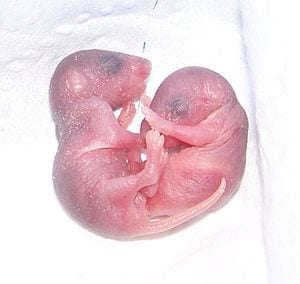Megan Sykes, a medical researcher, has a mouse with a human immune system — her own. She calls it “Mini-Me.”
There are also mice containing a part of 9-year-old Michael Feeney — a cancerous tumor extracted from his lungs. Researchers have tested various drugs on the mice, hoping to find the treatment that would work best for Michael.
In what could be the ultimate in personalized medicine, animals bearing your disease, or part of your anatomy, can serve as your personal guinea pig, so to speak. Some researchers call them avatars, like the virtual characters in movies and online games.
“The mice allow you the opportunity to test drugs to find out which ones will be efficacious without exposing the patient to toxicity,” said Colin Collins, a professor at the University of British Columbia.
Experiments on mice have been done for decades, including implanting people’s tumors into the animals. But the techniques have improved in the last few years and interest is growing. The National Institutes of Health held a workshop on personalized animal models earlier this month. And while the models are mainly being used for research, companies are beginning to commercialize them for use in drug development and medical treatment as well.
Experts caution that it has not been proved that the use of avatars will prolong the lives of cancer patients. And it costs tens of thousands of dollars, which insurers will not cover, to create and test a colony of the animals.
“It’s an act of faith to say this is a superior way of proceeding,” said Dr. Edward Sausville, a professor of medicine at the University of Maryland.
But some cancer patients, wanting to try everything possible, are turning to the mice anyway.
“This just seems right to us,” said Jill Feeney, the mother of Michael, who has been fighting a type of bone cancer called Ewing’s sarcoma since 2009, when he was 6. “It’s actually his tumor growing somewhere, and we’re treating it the way he would be treated.”
When Michael had surgery in February to remove a tumor that had spread to a lung, a courier was waiting outside the operating room in New York to whisk the tumor to a laboratory here run by a company called Champions Oncology.
Four hours later, technicians cut the tumor into five pieces and placed each piece under the skin of an anesthetized mouse. Two months later, after the tumors had grown, they were removed, cut into pieces and each piece implanted into another mouse. A month later there were enough mice models to begin testing.
via The New York Times – Andrew Pollack
The Latest Streaming News: Mice Stand-Ins updated minute-by-minute
Bookmark this page and come back often
Latest NEWS
Latest VIDEO








